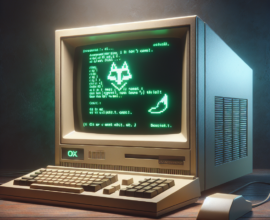Microsoft Windows also referred to as Windows, Windows OS or Win is a graphic operating system that was developed by Microsoft Corporation to run personal computers. Windows now is a group of several Graphical User Interface operating systems, all of which are developed by Microsoft Corporation. Microsoft Windows includes various groups which further are divided into several other sub-groups. For instance, Windows NT, Defunct Microsoft Windows and Windows IoT are groups belonging to the Microsoft Windows family whereas they do include sub-groups like Windows Server, Windows Mobile, Windows Companion, Windows Phone, etc.
Microsoft Windows Versions
Microsoft made an initial release of an operating system named Windows on November 20, 1985 in the form of a graphical operating system shell for MS-DOS. It was introduced in response to the growing market interests of the Graphical User Interface (GUIs). At that time Mac OS was the only operating system that was there in the market. It being released a year earlier, was the only operating system at that time. With the arrival of Microsoft Windows around 90% of shares were backed by Windows thus ruling the personal computer market around the world. Windows 1.0 was not actually a complete operating system but rather it extended the MS-DOS. The components that were included in the Windows 1.0 were Calculator, Calendar, Cardfile, Clock, Clipboard viewer, Paint, Reversi, Notepad, Terminal and Write. In the Windows 1.0 version, all the windows were tiled and not of the overlapping version. There were many components that Windows 1.0 lacked but due to limited operating systems available at that time, it was considered to be good.
Later in December of 1987, the Windows 2.0 version was released. As compared to Windows 1.0 it had most of the components and that was the reason for it gaining more fame than its predecessor. It included several improvements to the user interface and also to the memory management. It did involve the introduction of more sophisticated keyboard shortcuts and also usage of more expanded memory. It was in the Windows 2.03 version that the overlapping windows replaced the tiled windows screen. Then came Windows 2.1 which made use of the Intel processors for its functioning. The Intel processors were made use of to multitask the various DOS programs and also the paged memory model that was emulated using the extended memory. All these earlier versions were actually thought of as the graphical shells of the MS-DOS and were used for the file system services.
Then came Windows 3.0 version which was released in the year 1990. It had improved design which was mostly because of the loadable virtual device drivers and because of virtual memory. The Windows 3.0 applications were capable of running in various protected modes. Windows 3.1 and Windows 3.2 both released in the years 1992 and 1994 respectively brought significant changes to the Windows framework.
In August 1995, Windows 9x released its first version, namely Windows 95 which was still MS-DOS based but did introduce 32-bit applications, pre-emptive multitasking, plug-and-play hardware, increased stability and much more to its previous versions. In this version, the object-oriented user interface did replace the previous Program Manager that lacked the Start menu, taskbar and the Windows Explorer shell. It also was the first version to be introduced with the first version of the Microsoft web browser, Internet Explorer. The Windows 9x version also had the release of Windows 98 which introduced the Windows Driver Model, support for USB composite devices, ACPI, hibernation and the multi-monitor configuration.
Windows Millennium Edition referred to as the Windows Me was the last version of the Windows that was DOS-based. It had faster boot times, expanded multimedia functionality and additional system utilities such as System File Protection, System Restore and updated home networking tools. It however was very slow and also unstable in its working due to which it faced a lot of criticism.
Windows NT was the first Microsoft Windows version that was released based on a hybrid kernel. The Windows NT had many more sub-version releases that were aimed at providing additional improvements and architectural support for the PowerPC.
Windows XP was the next version of the Windows NT that was released on October 25, 2001. Windows XP was a hybrid of the consumer-oriented Windows 9x series and the Windows NT architecture. Windows XP had a user interface that had an updated Start menu and a taskbar that was streamlined with multimedia and networking features. In all the software version was designed to provide better performance. It was one of the most popular versions that Microsoft Corporations had ever built.
Windows Vista was released in November 2006 and had been developed with very new features being incubated into the software. It was particularly focused on the security. This Vista version also faced some criticism due to longer boot time and performance issues. Also, the license agreements were made even more stricter which led to it being more criticised in the market.
Windows 7 was intended to focus more on the incremental upgrade to Windows with the compatibility of the applications and hardware which the earlier versions could not achieve. Windows 7 even had multi-touch support an updated taskbar and many more improvement features added to its name. It was released on July 22, 2009.
Windows 8 was released on October 26, 2012, and had several significant changes that included optimizations for touch-based devices. It even had changes relating to the start screen that had large tiles designed for touch interactions and also apps that could be featured on touch screen devices. Also, cloud services and other online platforms were introduced such as the Windows Store and Windows RT.
Windows 10 was officially released on July 29, 2015, which included the return of the Start menu bar and the system compatibility with the virtual desktop system. It also featured the ability to run Windows Store apps within Windows on the desktop.
In June 2021, the Windows 11 version was released by Microsoft Corporation and is said to be more user-friendly and understandable. It is designed to make the previous version that is the Windows 10 look more reliable and efficient for use.
These were all the versions of Microsoft Windows that were released to date and included many changes that have made the use of Windows more convenient for us today. Even today most of the PCs are running on the Windows operating system. To learn more about the Windows operating system, do log onto the DockLearn website.





